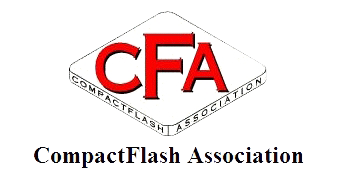Currently, the leading standard and speed from the CompactFlash association is set at a maximum transfer rate of 167MB per second, something that Sony, Sandisk and Nikon are not happy with. With Sony and Nikon making top DSRL camera’s and Sandisk making every from of Memory Card out there, the trio are looking for bigger memory cards and faster transfer speeds. Currently, all memory cards use the PATA serial interface to transfer information around. Under the new proposal, companies would shift to the newer, PCI Express serial interface which would give them speeds up to 500MPs for transferring and up to 2TB storage space, which blows away the current 32GB and 64GB sizes that are still hard to find and afford. This will not only benefit DSLR users who want to transfer their RAW files faster to the computer, but will help out the on going Megapixel war and allow users to go on full trips without needing a new card. If this new standard is also approved, this can help Camcorder manufactures like Sony as well, who currently offer plenty of hard drive based camcorders. Now a user can just buy the storage space they want, much like they would with a digital camera. According to Engadget, The CompactFlash Association has already announced a new workgroup to study the proposal. Canon’s Shigeto Kanda, CFA chairman of the board, had this to say about the proposal:
Future professional photography and video applications will require memory cards with faster read/write speeds. The development of a new high-performance card standard with a serial interface will meet the needs of the professional imaging industry for years to come and open the door for exciting new applications.
SANDISK, SONY AND NIKON PROPOSE INDUSTRY STANDARDS FOR NEXT-GENERATION HIGH-SPEED MEMORY CARD FORMATCompanies to Jointly Develop New Specifications to Meet Needs of Professional Photography and Video MarketsSanDisk CorporationSony CorporationNikon CorporationNovember 30, 2010, Japan – SanDisk Corporation, Sony Corporation and Nikon Corporation today announced the joint development of a set of specifications that address the future requirements of professional photography and video markets. The three companies proposed the specifications to the CompactFlash® Association (CFA)*, the international standards organization, with the intent to standardize the format.Professional photography and High Definition (HD) video applications require a new generation of memory cards capable of processing significantly larger files. To address the imaging industry’s future speed and capacity demands, SanDisk, Sony and Nikon proposed a new card specification whose performance and storage capabilities surpass those of existing memory cards. Once accepted, the new format will enable exciting new possibilities in the professional imaging and video markets.The proposed specifications achieve data transfer rates of up to 500 megabytes per second (MB/sec)** (theoretical maximum interface speed) using the highly versatile PCI Express*** interface. The increased speeds will enable imaging and video applications that could not be accomplished using the current CompactFlash specification’s Parallel ATA (PATA)**** interface. CF6.0, released in November 2010, offers maximum performance of up to 167MB/sec.The new specifications’ faster speeds enable continuous burst shooting of massive RAW images. The enhanced performance also allows users to quickly transfer storage-intensive high-resolution photos and videos from the card to a computer. The specifications combine high-speed data transfer with low power consumption via a power scaling system to extend battery life.In addition to industry-leading performance capabilities, the new memory card specifications also meet the future capacity and durability requirements of professional imaging applications. The proposed new specifications has the potential to extend theoretical maximum capacities beyond 2 terabytes (TB)*****, making it especially useful for high resolution images and HD video applications. Similar in size to a CompactFlash® card, the new specifications’ access control function and highly durable form factor produce a combination of physical ruggedness and reliability that is indispensable for professional usage models.”This ultra high-speed media format will enable further evolution of hardware and imaging applications, and widen the memory card options available to CompactFlash users such as professional photographers,” said Mr. Shigeto Kanda, Canon, and chairman of the board, CFA. “This next generation format is expected to be widely adapted to various products, including those other than high-end DSLRs.””The ultra high-speed media, which will be realized by this new card format, will expand the capability of digital SLR cameras and other professional digital imaging equipment,” said Mr. Kazuyuki Kazami, operating officer, vice president and general manager, development headquarters, imaging company, Nikon Corporation.


You must be logged in to post a comment.